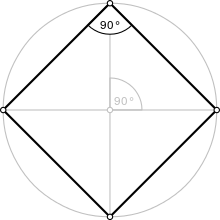Difference between revisions of "Quadratic Equations application activity1"
m (added Category:Quadratic Equations using HotCat) |
|||
| (4 intermediate revisions by 2 users not shown) | |||
| Line 14: | Line 14: | ||
==Website interactives/ links/ simulations/ Geogebra Applets== | ==Website interactives/ links/ simulations/ Geogebra Applets== | ||
| − | [http://academic.sun.ac.za/mathed/malati/Files/Equity991.pdf'''more about quadratic equation'''] | + | [http://academic.sun.ac.za/mathed/malati/Files/Equity991.pdf '''more about quadratic equation'''] |
==Process (How to do the activity)== | ==Process (How to do the activity)== | ||
| − | '''A gardener wants his garden to have an interesting geometrical appearance. | + | '''A gardener wants his garden to have an interesting geometrical appearance.''' |
| − | He decides on the following rules for building the flowerbeds | + | He decides on the following rules for building the flowerbeds |
They must all be rectangular. | They must all be rectangular. | ||
The perimeter and the area must be the same. | The perimeter and the area must be the same. | ||
1. How many different flowerbeds can the gardener make if one of the sides is | 1. How many different flowerbeds can the gardener make if one of the sides is | ||
3 units less than the other side as shown in the diagram below: | 3 units less than the other side as shown in the diagram below: | ||
| − | |||
| − | |||
| Line 35: | Line 33: | ||
==Developmental Questions (What discussion questions)== | ==Developmental Questions (What discussion questions)== | ||
| − | # | + | #pupils should be encouraged to use their own informal methods before being |
introduced to formal solution procedures. | introduced to formal solution procedures. | ||
#revisit the concept (meaning) of the solution of an equation. The number | #revisit the concept (meaning) of the solution of an equation. The number | ||
of solutions of an equation (no solution; 1 solution, 2 solutions or many solutions) | of solutions of an equation (no solution; 1 solution, 2 solutions or many solutions) | ||
will be dripped. | will be dripped. | ||
| − | # | + | #out of this they will extract the notion of a quadratic equation, so as to distinguish it |
#finally, we will reflect on the solution procedures. | #finally, we will reflect on the solution procedures. | ||
==Evaluation (Questions for assessment of the child)== | ==Evaluation (Questions for assessment of the child)== | ||
| + | *pupils will probably have no other method available but to solve these | ||
| + | equations using numerical methods<br> (setting up a table or proceeding with guess and | ||
| + | improve). <br>*The pupils might set up tables from the original equations:<br> | ||
| + | x 2 − 7x −6<br> | ||
| + | 6 − 12 −6<br> | ||
| + | 10 − 12 −6<br> | ||
| + | x x(x − 3) 4x − 6<br> | ||
| + | 3 0 4 <br> | ||
| + | *The pupils need to be encouraged to move through the numbers to find the solutions | ||
| + | and to make sense of the solution in the context of the problem.<br> | ||
| + | *It also needs to be made explicit here that we are now dealing with an equation that | ||
| + | involves a term with an unknown of the second degree. | ||
| + | |||
| + | |||
| + | Image:http://upload.wikimedia.org/wikipedia/commons/thumb/a/a5/Regular_polygon_4_annotated.svg/220px-Regular_polygon_4_annotated.svg.png | ||
| + | |||
==Question Corner== | ==Question Corner== | ||
==Activity Keywords== | ==Activity Keywords== | ||
| − | + | [[Category:Quadratic Equations]] | |
| − | [[ | ||
Latest revision as of 12:07, 5 November 2019
Activity -Situation that leads to Quadratic Equations
==Estimated Time==15 Minutes
==Materials/ Resources needed==White papers
Prerequisites/Instructions, if any
- pupils know how to factorise trinomials and complete the square
- pupils are familiar with the meaning of "square" and the concept of "perfect
square".
Multimedia resources
Website interactives/ links/ simulations/ Geogebra Applets
Process (How to do the activity)
A gardener wants his garden to have an interesting geometrical appearance. He decides on the following rules for building the flowerbeds They must all be rectangular. The perimeter and the area must be the same. 1. How many different flowerbeds can the gardener make if one of the sides is 3 units less than the other side as shown in the diagram below:
2. How many different flowerbeds can the gardener make if both sides are the same length, as shown in the diagram below:
Developmental Questions (What discussion questions)
- pupils should be encouraged to use their own informal methods before being
introduced to formal solution procedures.
- revisit the concept (meaning) of the solution of an equation. The number
of solutions of an equation (no solution; 1 solution, 2 solutions or many solutions) will be dripped.
- out of this they will extract the notion of a quadratic equation, so as to distinguish it
- finally, we will reflect on the solution procedures.
Evaluation (Questions for assessment of the child)
- pupils will probably have no other method available but to solve these
equations using numerical methods
(setting up a table or proceeding with guess and
improve).
*The pupils might set up tables from the original equations:
x 2 − 7x −6
6 − 12 −6
10 − 12 −6
x x(x − 3) 4x − 6
3 0 4
- The pupils need to be encouraged to move through the numbers to find the solutions
and to make sense of the solution in the context of the problem.
- It also needs to be made explicit here that we are now dealing with an equation that
involves a term with an unknown of the second degree.
Image: